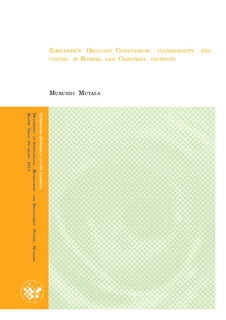| dc.description.abstract | Faced with an increasing frequency of droughts, the local communities of Buhera and Chikomba are constantly at risk of food insecurity and water stress due to their dependence upon rain-fed agriculture. This study employed semi-structured questionnaires, interviews with key informants, observations and media monitoring in a mixed research methods approach. It was conducted in order to assess the people’s degrees of vulnerability to drought impacts, and to review their survival mechanisms and adaptive strategies. The introductory chapter briefly reviews the country’s agricultural sector and the internationally politicised land question so as to contextualise the study, and introduces the vulnerability concepts and theoretical approaches used in the research. Some state policies were found to have actually contributed to the vulnerability of the people in the communities. The country has not maintained a national strategic grain reserve since the late 1990s and its focus on cash crops created a near-monoculture of maize, a crop variety that is vulnerable to moisture fluctuations. The economic challenges and the violent political environment of 2008 contributed to food shortages and the closure of a majority of rural shops. Some humanitarian organisations inadvertently worsened households’ vulnerability to drought impacts through ill-informed screening methods and flawed relief aid targeting. Increased morbidity and school dropouts, the lowering of the water table and an upsurge in livestock and grain thefts were among the effects of droughts experienced in Buhera and Chikomba. Wild fruits and relief aid became alternative food sources. The study revealed that the people in these communities were not passive victims in the face of a disaster; instead, they were enterprising and innovative, and employed their indigenous knowledge systems to predict weather patterns in the absence of conventional modern weather predictions. The local communities developed mitigation strategies to protect themselves against the climatic exigencies, despite their difficult conditions. The study concludes with some recommendations largely developed from suggestions by informants in the communities and representatives of the NGOs and government departments, as well as ideas based upon the broader literature on droughts. | en_US |
